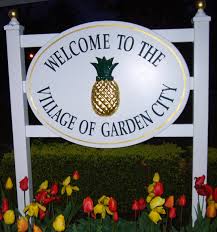 (photo credit; wiki.com)
(photo credit; wiki.com) What many people don’t realize, and I was one of them, up until moving to Long Island over two decades ago, is that Long Island contains a plethora of historic destinations, leisure activities, cultural events and more to visit and experience.
So, let’s start with the first town in the spotlight for 2018 - Garden City. Approximately thirty miles east of Manhattan, Garden City is an incorporated village in the town of Hempstead. The history of this hamlet is quite interesting, to say the least.
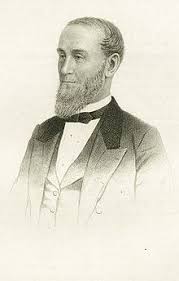 Alexander Turney Stewart (photo credit: en.wikipedia.com)
Alexander Turney Stewart (photo credit: en.wikipedia.com) The town was the brainchild of Irish-born millionaire, Alexander Turney Stewart in the late 19th Century. With an inheritance of approximately $5000-$10,000 from his maternal grandfather, Stewart founded the largest retail store in the world, in lower Manhattan during the 19th Century.
Throughout his life, Stewart would accumulate more wealth than any other American had in a single lifetime and was recognized worldwide for his accomplishments.
What is most saddening to me, after learning about A.T. Stewart, was the fact that the legacy of this amazing American is virtually unknown to most today. Stewart was such an American pioneer in so many ways - business-wise and financially, as a retail mogul and real estate investor, philanthropically, as an art collector and even politically. Not to mention, being one of the richest men this country has ever had, and today, he is virtually unknown.
With the exception of the exquisitely produced video documentary by Garden City historian, John Ellis Kordes, A.T Stewart's Garden City, this incredible individual is not chronicled in the history books. Men like Andrew Carnegie, Henry Ford and John Rockefeller, had heirs to carry on their legacy and have been revered as American industry moguls. Alexander Turney Stewart preceded these men in his vision and accomplishments in our great nation and should, in my opinion, be recognized and acknowledged in a similar manner for all the contributions he made.
I whole heartedly suggest that you watch the incredible documentary (circa 1994) produced by Mr. Kordes. Thank you Mr. Kordes for having the inspiration to make such an informative video, which, in my opinion is better than most History Channel documentaries.
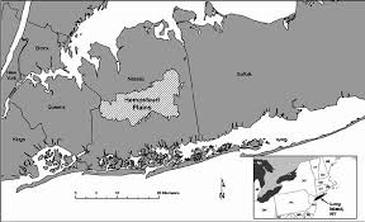 The Hempstead Plains was purchased by A.T. Stewart in 1869. (photo credit: researchgate.net)
The Hempstead Plains was purchased by A.T. Stewart in 1869. (photo credit: researchgate.net) Paying $55 an acre for 7000 areas, Stewart detailed his intentions for this purchase in his own words, in this excerpt of a letter to the editor of The Hempstead Sentinel, July 6, 1869:
“I consider it proper to state that my only object in seeking to acquire these lands is to devote them to the usual purposes for which such lands, so located, should be applied that is, open them by constructing extensive public roads, laying out the lands in parcels for sale to actual settlers, and erecting at various points attractive buildings and residences, so that a barren waste may speedily be covered by a population desirable in every respect as neighbour taxpayers and as citizens. In doing this I am prepared and would be willing to expend several millions of dollars.” *
The cornerstones of the town, which gave it more or less a reason for being that would attract residents, were the establishment of rail transportation, a hotel, a boys and girls' school and a water well to provide the town with fresh water.
In 1873, the Stewart Central Railroad of long island, owned by Stewart was built. The first commercial buildings were established on Hilton Avenue a year later, many of which are still there. The development of the Garden City Water Works in November 1876 came next and was one of the most modern in the country, and according to Mr. Kordes' documentary, “the water was so pure, it was bottled and sold throughout the country.”
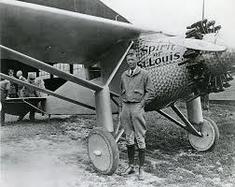 Charles Lindbergh with his plane, The Spirit of St. Louis at Roosevelt Field, Long Island on May 21, 1927
Charles Lindbergh with his plane, The Spirit of St. Louis at Roosevelt Field, Long Island on May 21, 1927 With a nearby full 18-hole golf course for guests and residents, The Garden City Country Club course was recognized as one of the finest in the country. Today it is one of three in existence in the town, which also include Cherry Valley Country Club and Garden City Golf Club.
For those history buffs, The Garden City Hotel is where Charles Lindbergh stayed the night prior to his famous transatlantic flight
in 1927 in the Spirit of St. Louis** for which he took off down the dirt runway of Roosevelt Field Long Island.
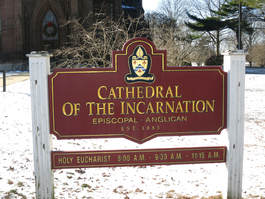
Although A.T. Stewart did not live to see the finalization of his dream, his wife continued his vision and in her husband's memory, as a way to carry on her husband's legacy and insure the importance of the town he began building, Cornelia commissioned the construction of the Episcopal Cathedral of The Incarnation built in Stewart's honor. She was also successful in convincing the Episcopal Church to make this cathedral the seat of the Episcopal diocese, which was then-located in Brooklyn, resulting in its relocation to Garden City.
A fun fact is that during the schools' construction, temporary houses were built for school to be held. The children affectionately named these houses, many of which still exist today, referring to the larger ones, ten in all, as "the Apostles" and the smaller ones, as "the Disciples."
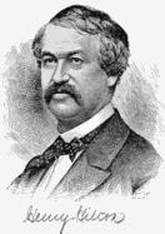 Henry Hilton (photo credit: westhempsteadnowandthen.blogspot.com)
Henry Hilton (photo credit: westhempsteadnowandthen.blogspot.com) Stewart left Hilton an inheritance along with strict instructions to liquidate his business interests after his demise, based on his belief that no one was capable of running his empire successfully. Hilton, instead, convinced Cornelia to give him complete control of the Stewart business empire in lieu of the monetary inheritance. She agreed, trusting him. Tragically, Hilton was quite incompetent and within twenty years, he had destroyed the Stewart business casting his name into obscurity.
Garden City has some very significant ties to the history of both Long Island and our country.
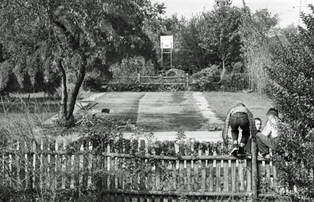 Motor Parkway Remnants Between Russell Road and Pell Terrace in Garden City (photo credit: vanderbiltcupraces.com)
Motor Parkway Remnants Between Russell Road and Pell Terrace in Garden City (photo credit: vanderbiltcupraces.com) Many people may not be aware that Garden City was home to The Long Island Motor Parkway from 1908 - 1938, which served as a model for the world's parkways. Built exclusively for the new "motor car" it was the brainchild of William K. Vanderbilt Jr. who was behind its construction and would be the site of the Vanderbilt Cup Race which was an international event with drivers from all around the globe.
The parkway stretched 48 miles with 65 bridges that ran from the Queens border to Ronkonkoma.
Although it closed in 1938, there still exists part of this parkway in Suffolk County.
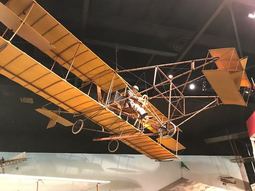 "Cradle of Aviation Museum, Garden City, NY (c) travelincousins.com
"Cradle of Aviation Museum, Garden City, NY (c) travelincousins.com Garden City became the focal location for the new air flying craze in the early part of the twentieth century. With flying shows, events and later, flying schools, spectators traveled from near and far to watch men and women taking off in the newly invented airplane.
The fields of the Hempstead Plains were perfect for air flight with popular events that attracted people from all over to watch international flyers show off their flying skills and some very famous "take offs" including Charles Lindbergh's world renown thirty-three hour flight from New York to Paris in 1927.
In 1917, these fields were taken over by the United States Government for military training purposes during World War I and renamed Hazelhurst Field. After the war, the name would be changed again, this time to Roosevelt Field in honor of Teddy Roosevelt's son Quentin who died serving in World War I, with it returning to its former role as a commercial aviation field.
Today, The Cradle of Aviation Museum can be visited in Garden City, with facts, information and artifacts from this historic time - a must-see in Garden City!t
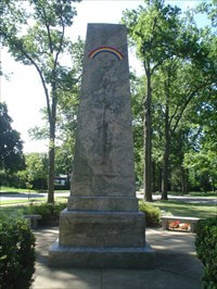 Rainbow Monument honoring The Rainbow Division of World War I on the corner of Clinton Road and Saint James Street (photo credit: way marking.com)
Rainbow Monument honoring The Rainbow Division of World War I on the corner of Clinton Road and Saint James Street (photo credit: way marking.com) Another little known fact is that Garden City was the training ground and encampment site for what became known as The Rainbow Division during World War I. Preparing to send troops overseas to fight in "The Great War" in 1917, the U.S. government chose the area of Garden City, Long Island as its training area prior to deployment.
More than 500,000 soldiers would arrive via the Stewart Central Railroad on Clinton Avenue, over a period of two years, marching through the town and welcomed by the town's citizens. And a little historic trivia is that an unknown colonel that was part of this division, who would later garner fame in World War II, was General Douglas MacArthur.
A memorial stands at Clinton Road honoring Camp Albert L. Mills, Birthplace of the Rainbow Division.
With Mr. and Mrs. Stewart gone, Cornelia’s heirs formed the Garden City Company to run the village more like a corporation, and according to town historian, John Ellis Kordes***, is one of the main reasons that kept Stewart’s vision from failing. It was at this time, that buying homes was possible for residents rather than leasing from the Stewart estate.
According to Mr. Kordes, ''It was the Garden City Company, run by these prominent New Yorkers, that built the golf course, remodeled the hotel, brought Doubleday out here, that built up Garden City into the Garden City that we know today. Those formative years, from 1893 to 1919, were solely credited to the Garden City Company's incredible talent to doing the right thing.''
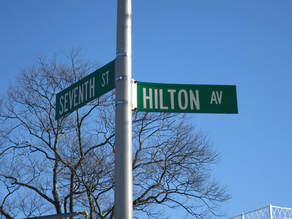 (c) travelincousins.com
(c) travelincousins.com There have been numerous changes in Garden City since its incorporation, and today, it is a hub for business, banking and finance as well as home to great shopping, entertainment and fine dining.
The towns public schools are recognized as some of the finest in the country. Additionally, Garden City is home to the 76-acre campus of Adelphi University, which moved from Brooklyn in 1929 (then Adelphi College), becoming the first four-year college in Nassau or Suffolk counties. The State University of New York (SUNY) Nassau Community College is also located in Garden City.
Roosevelt Field shopping mall in Garden City was built back in the 1950’s, after the airfield was closed and after several remodels and expansions through the more than fifty years since it was established in the location of the former airfield, it is now home to some of the finest retail stores including Neiman Marcus, Bloomingdales and Nordstrom.
Nearby Franklin Avenue which was once referred to as The Fifth Avenue of Long Island, because of the plethora of fine shops and stores that lined the street, is now home to many banking and brokerage firms as well as a mecca for lawyers, with the Nassau County seat located within blocks, in nearby Mineola.
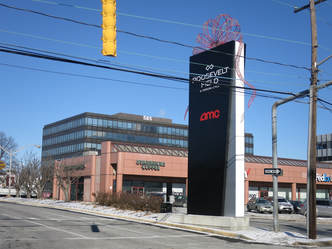 The Stewart Avenue entrance to Roosevelt Field Shopping Mall in Garden City (c) travelincousins.com
The Stewart Avenue entrance to Roosevelt Field Shopping Mall in Garden City (c) travelincousins.com Seventh Street is perhaps best known as the town’s “main street” and quaint center of town, which is lined with stores, boutiques, restaurants with outdoor seating, an art gallery, a neighborhood Starbucks, gourmet stores and more.
During the summer months, Seventh Street is home to the town’s Friday Night Promenade which has become a popular tradition in the village. Each Friday features a different theme and allows residents and guests to walk around the downtown without fear of traffic, dine outside, enjoy live music and entertainment, and much more.
Summer fun can also be found at the Garden City Hotel which opens its promenade with outdoor seating for drinks and cocktails, a beautiful way to spend warm weather nights. Across from the hotel is the lovely War Memorial, honoring those individuals who served in World Wars I and II, Korea, Vietnam as well as most recently, Iraq and Afghanistan.
For cultural enjoyment, Museum Row in Garden City has some of Long Island's best museums, including The Long Island Children's Museum, The Long Island Firefighter's Museum, and The Cradle of Aviation (mentioned above). It is also the site for Nunley’s Carousel, first located on the Brooklyn waterfront, and later in Baldwin, Long Island, until its restoration and relocation in 2009.
A short walk around the block from the hotel between Stewart and Hilton Avenues, is the Garden City Gazebo, which hosts summer concerts to enjoy while sitting on the lawn. The gazebo is the gathering place in December for the town's Christmas tree lighting ceremony, full of holiday cheer and warm drinks.
To experience this charming Long Island Hamlet via public transportation, simply take the Long Island Railroad to Garden City (on the Hempstead line).
Whether you visit for the day or spend a weekend at the famed 5-star hotel, indulging in the spa services, other amenities and all Garden City has to offer, it is an opportunity to experience A.T. Stewart's dream.
Last but not least, did I mention that I am a proud resident of Garden City and can attest to this town’s appeal!
Check out an additional Travelin' 25 about Garden City below.
-Elisa
About Alex Turney Stewart and
Garden City, Long Island, New York
1. Garden City was founded in 1869 by Alexander Turney Stewart,
prominent entrepreneur, retail mogul and millionaire.
2. A.T. Stewart was born in Lisburn, Ireland and came to New York in 1818, when he
founded a small dry goods retail store on lower Broadway with the money he
received from his inheritance from his maternal grandfather.
3. He was known as a fair and honest businessman, and by the 1830's he was a millionaire
4. A.T. Stewart & Company moved to a large space on Chambers Street in 1848,
made of tuckahoe marble, the first of its kind in the United States.
5. Stewart's store carried all kinds of merchandise and broke it into departments,
thus, creating the first-ever department store in the country.
6. In 1862, Stewart's store took up the entire area of an entire city block and
was the largest store in the world.
7. Stewart was the first American businessman who had a worldwide organization
with offices in Boston, Philadelphia, Paris, Lyon, Manchester, Nottingham,
Belfast, Glasgow and Berlin.
9. A.T. Stewart had any real estate holdings which included hotels as well as the finest private art collection.
10. The Stewarts built a new home at the corner of 5th Avenue and 34th Street, which was the
largest residence on the continent at the time, that rivaled European palaces.
11. Stewart & Cornelia lost two infant children, a boy and a girl.
12. He was an American legend in his time and fiercely patriotic, supplying the government
during the Civil War, becoming part of the newly formed Republican party,
supporting Abraham Lincoln and the north.
13. He accompanied Ulysses S. Grant during the procession of his inauguration and later
Grant appointed Stewart to be Secretary of the Treasury because of the terrible
post-war economy. Unfortunately, an old law in 1789 stated that anyone involved
in commerce could not hold government position, sadly.
14. He purchased The Hempstead Plains, which was two-thirds the size of Manhattan in 1869.
15. The Hempstead Plains, mostly, grassy, infertile land, were used for horse racing, and Civil War military training at the time Stewart purchased them.
16. In total Stewart's purchase was 9000 acres - 7000 acres from the town of Hempstead for $55
an acres and an additional 2000 acres from private individuals for a total of $500,000.
This land stretched from Floral Park to Bethpage, Long Island.
17. His vision was to create a place that embodied his ideals that would grow long after he was
gone, which he would call Garden City. Names considered prior to Garden City
were Alexandria and City on the Plains.
much of which still remains the same today.
20. The Cathedral of the Incarnation was commissioned to be built by Cornelia Stewart
in honor of her husband and when it was completed in June 2, 1885, it was
the tallest building on Long Island with a 200 foot spire
containing 13 bells to represent the thirteen U.S. colonies.
21. The Village of Garden City was incorporated in 1919 so the people of Garden City
could govern themselves and George Hubbel was its first mayor.
22. The first trolley was built running up and down Franklin Avenue.
23 The two most beautiful streets in Garden City with center tree-lined islands were
Nassau Boulevard and Stewart Avenue.
24. Doubleday Publishing made Garden City its headquarters and
remained for most of the 20th Century.
25. Garden City is referred to as The Cradle of Aviation as the fields were used for flying local and international spectator events, the location where the first air mail delivery took off and and the training of U.S. Military air training during both World Wars I and II.
** Note: Although the original hotel structure, as well as that which replaced it at the end of the 19th century, were torn down years ago, a 5-Star hotel still stands on the original grounds).
*** John Ellis Kordes, a local historian, professional photographer and producer of the documentary, ''A. T. Stewart's Garden City'' which was instrumental in writing this article. I wholeheartedly suggest that you watch the incredible documentary (circa 1994) produced by Mr. Kordes. Thank you Mr. Kordes for having the inspiration to make such an inspiring video, which, in my opinion is better than most History Channel documentaries.
Visit the town website at Incorporated Village of Garden City
The Garden City Hotel

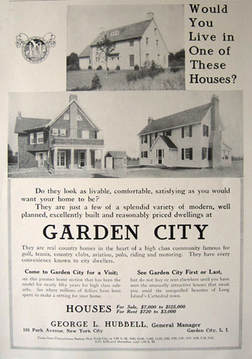
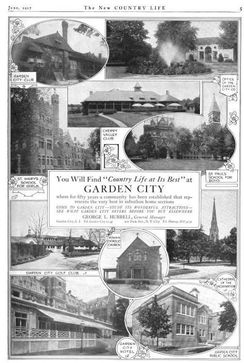

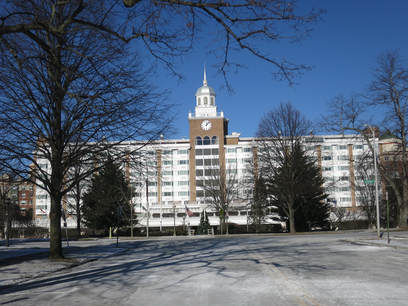
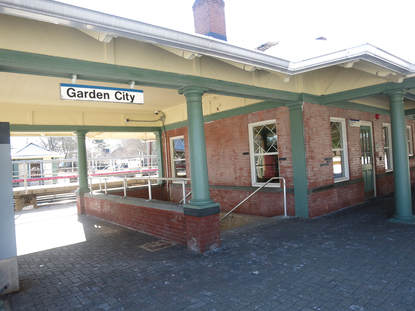
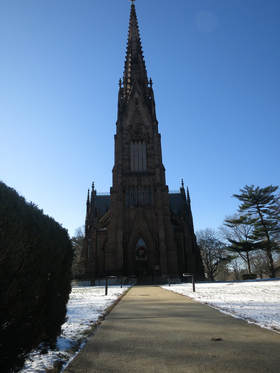
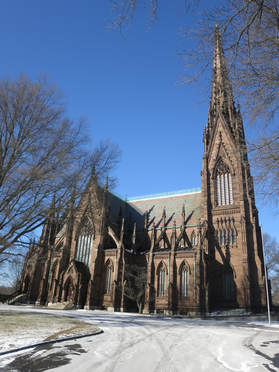
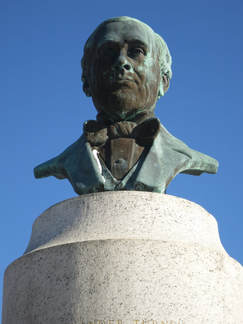
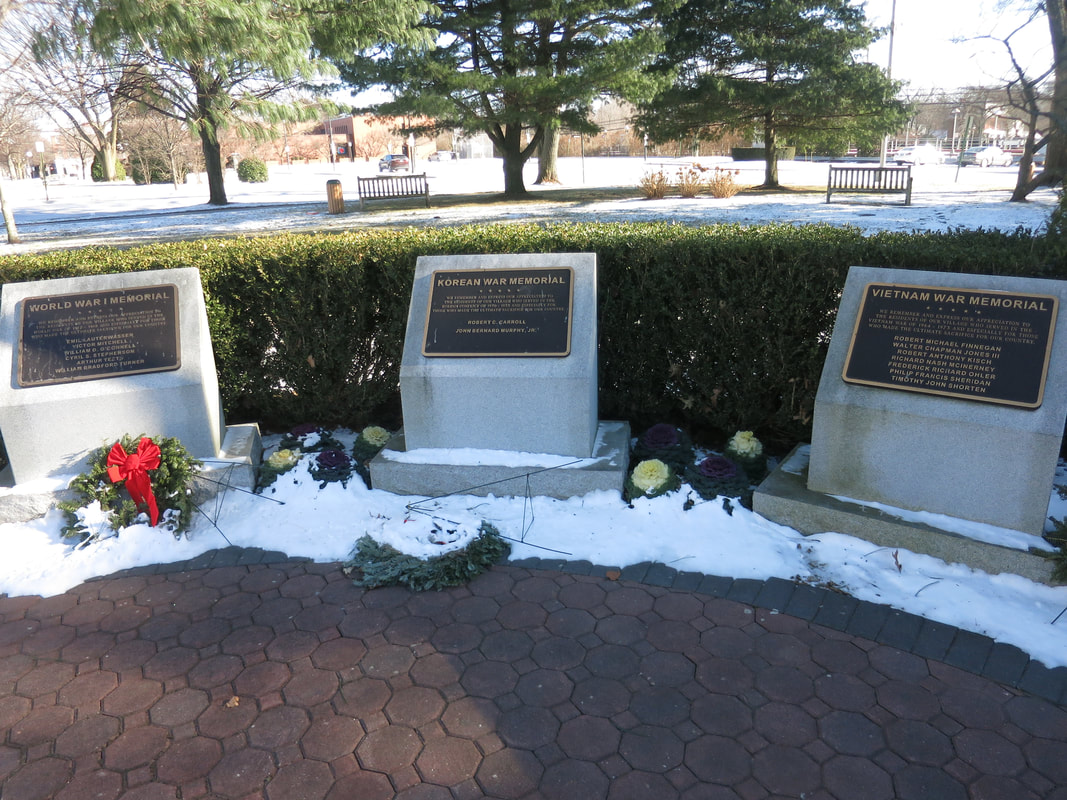
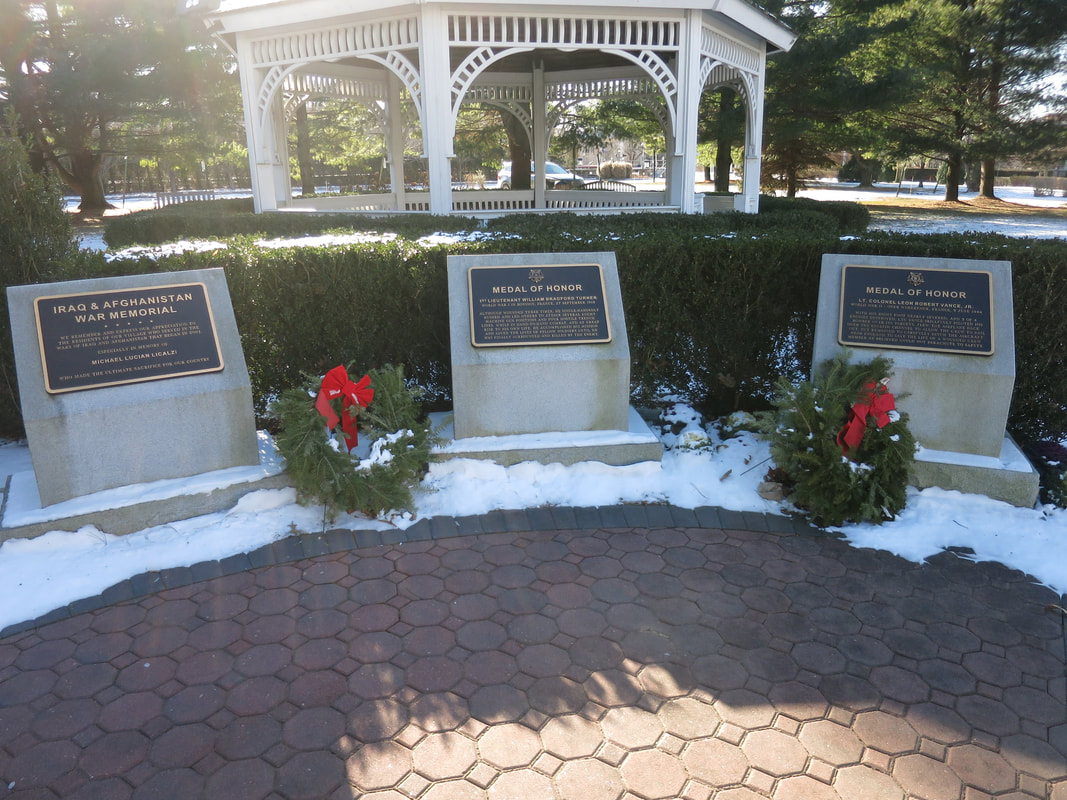
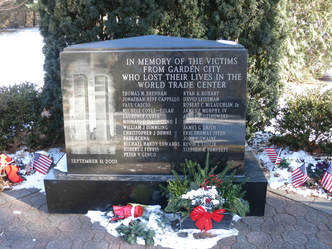
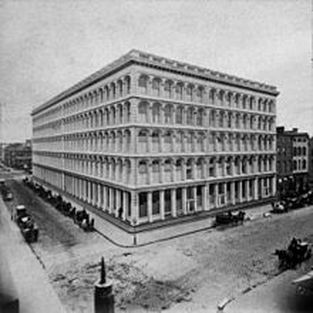
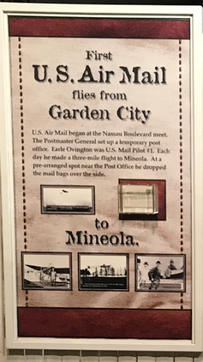

 RSS Feed
RSS Feed